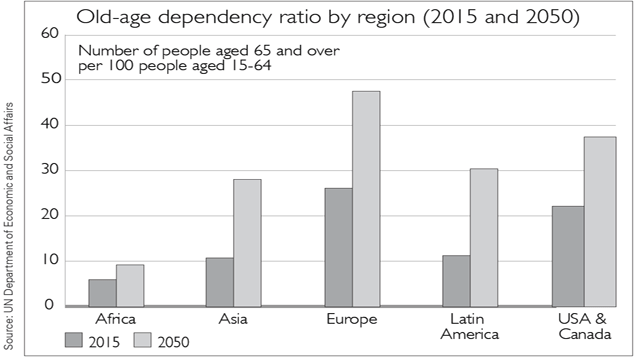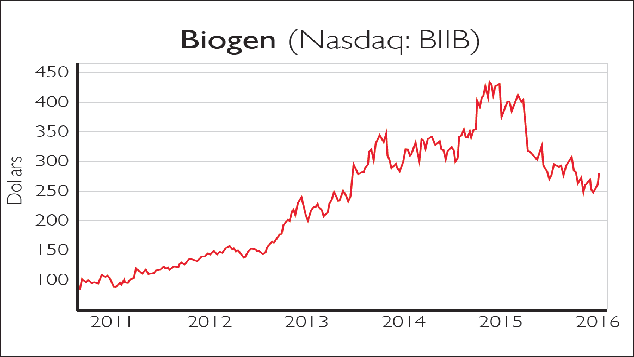How to make money in a greying world
Fewer babies are being born and the elderly are living longer. That’s a demographic time bomb for economies, but smart investors can profit from the trend, says Jonathan Compton.

Fewer babies are being born and the elderly are living longer. That's a demographic time bombfor economies, but smart investors can profit from the trend, says Jonathan Compton.
How do you generate strong economic growth? Economists could debate the answer all day, but the basic formula is pretty simple. A core component is good demographics the age profile of the population. A surge in the birth rate is good for the economy as it makes for a growing workforce. The next requirement is as few old people as possible they are a burden on productive workers. To this, add a reasonably fair legal system, a basic level of property rights, and low spending on welfare and defence they contribute little to growth.
The final two factors are a dose of free enterprise/capitalist politics, and an increase in the general availability of credit. Once all these factors are in place, any economy must boom. This was the story of Asia's "tiger economies" between 1970 and 2000, of eastern Europe's rapid development after the collapse of the USSR, and of a few African countries today. But it's all about to go sour, and that's partly down to deteriorating demographics.
MoneyWeek
Subscribe to MoneyWeek today and get your first six magazine issues absolutely FREE

Sign up to Money Morning
Don't miss the latest investment and personal finances news, market analysis, plus money-saving tips with our free twice-daily newsletter
Don't miss the latest investment and personal finances news, market analysis, plus money-saving tips with our free twice-daily newsletter
From the first appearance of Homo sapiens, it took more than 200,000 years for the world's population to reach one billion (1804), 123 further years to reach two billion (1927), then only 33 years to three billion (1960). Now it is over seven billion. Doomsters say this mix of parabolic growth and finite resources will lead to mankind's demise.
Maybe but a more likely risk is the serious problem of too few productive people. The world's population growth rate peaked between 1960 and 1970. During that decade, the population grew by 22%. Now growth is around 8% per decade. That's expected to fall to 7% in 2030 and 0.5% by 2050. This would see the world's population peak at nine billion or so, then probably fall. That could cause pain for today's global financial system.
The problem of falling fertility rates
Moreover, fewer babies are being born. The number of children per female needed to ensure the population remains at least stable the replacement rate is about 2.1. In developing nations, it's as high as 3.4 babies per female (because of higher childhood mortality). But in all advanced countries, fertility rates have been falling steadily, and are in many cases now well below the replacement rate. Those such as Japan and Italy have a fertility rate of just 1.3. Some of the most populous developing countries also fail to make the replacement rate, such as China (1.7), Brazil (1.8) and Indonesia (2.2).
Why is fertility falling? The causes are dimly understood, but candidates include better, more widespread contraception; urbanisation (farmers stay at home more and have fewer distractions than city dwellers); higher female participation in the workforce; having families later; and lifestyle choices ("live well with two children or in penury with six"). This is not to mention the decline in male fertility, which has science baffled.
Despite low fertility rates, in most nations the population is still rising because people are living far longer. In the UK, for example, life expectancy for a male in 1900 was 47 (party because of high infant mortality). Today it is 82. Thus a major demographic shift is taking place: fewer babies and more elderly people. Some countries are concerned about this. The most worried has been France, which as long ago as the 1930s introduced financial incentives for families to have more children, and disincentives to discourage women from working. Many of these "baby bonuses" remain in place today, while China has announced the abolition of its one-child policy.
Low fertility rates have produced radical changes to demographic pyramids. When you show the age groups of a country's population in bands, then traditionally the widest band was the youngest, at the bottom ; the narrowest, the elderly, was at the top. In other words, there were more young people than old people, and the older the age bracket, the fewer of them there were. Pictures of current population bands are now more columnar, with about the same number of people in each band. As replacement rates decline and longevity improves, so the top bands are becoming the widest. The result is an inverted pyramid.
The grad-to-granny ratio
Two clear trends have emerged. The first is a low "grad-to-granny ratio" (a term I first saw in an HSBC presentation) and the second, a broader total dependency ratio. The former measures how many 20 to 29 year olds there are relative to 50 to 75 year olds. In other words, it compares the number of new workers (those soon to reach peak earnings and thus paying the most into the tax system) with the number of those retiring or about to do so (thus drawing money out).
In Japan by 2010, this was already bad, at around one grad to one granny. In western Europe it was 3:2, and in China about 2.5:1. As we can reasonably accurately predict these ratios in 20 years' time because we already know how many children are around today and the fertility rate we can see that the picture in Japan and western Europe is set to worsen only slightly, but in China the ratio faces a collapse to 1:1.

A grim outlook
The total dependency ratio is the broadest measure and calculates the number of dependants (those under 15, or over 65) per 100 people of working age. With few exceptions, the outlook is grim. In the UK today, there are 42 dependants per 100 people, in America 49, Germany 52, and Japan 57. By 2050, these surge to 70 in the UK, America 66, Germany 83 and Japan 96.
In a few developing countries with high birth rates and better life expectancy, such as India or South Africa, the ratio improves. Even so, in Africa and Asia, the number of over-65s will rise by 159% and 216% respectively by 2050, which existing welfare systems cannot hope to afford.
This is a problem, to put it lightly. All governments' finances have been predicated on the assumption that the population would always rise, and that the number of people in work would grow to support those who are not. This ever-growing workforce would also pay more tax, so a higher national debt could always be serviced. This model is irredeemably broken. As dependency ratios rise and expectations of better state support rise even more, these benefits cannot be funded.
Politicians are waking up to the problem, hence (usually covert) changes are under way, from extending retirement ages and cutting the size of pensions, to charging more for care and dropping fringe benefits, such as cheap travel or fuel. Yet the changes are coming perilously slowly. The problem for politicians is that the wealthy silver foxes are not only the fastest-growing part of the population, but also the most active voters, demanding ever more freebies.
Bond markets will at some stage start to differentiate between national demographic structures, then panic when they realise that falling populations and workforces mean some countries will be unable to pay up. It is noteworthy that the eurozone banking crisis and the sovereign default panic was focused on the five so-called PIIGS Portugal, Ireland, Italy, Greece and Spain four of which have the lowest fertility rates and fastest-growing dependency ratios in the eurozone.
The problem of drawdown
An ageing world presents another serious problem for markets, known as "drawdown". During a typical working life, people strive to own larger houses, fancier cars, perhaps a second home, expensive holidays and other costly and often unnecessary trappings that nevertheless boost the economy. They create a multiplier effect.
At somewhere between 55 and 65, this multiplier begins to wane. Older people start to fear for the future, and reduce spending and borrowing. Many choose to hoard money for old age. In short, older people have a negative economic multiplier, made worse when they do things such as hire low-paid carers workers who could be doing more productive jobs.
What does all this mean for investments?
In America, the data show that a typical investor's portfolio allocation to equities peaks at around 80% at 45 years old, when they're earning the most and liabilities are receding. Thereafter the allocation to bonds rises from around 10% to 30% by 75, in the hope of guaranteed income. But most importantly, the amount held in cash or near-cash investments rises consistently, from around 5% at age 45 until it accounts for more than half of the portfolios of those aged 75.
This means the amount of new money flowing into equities steadily ebbs and may turn negative. Thus, all things being equal, stocks must get cheaper. For bonds, the news is little better although older owners of wealth tend to raise their holdings, the rate at which they do so is slower than the rise in government debt. The resulting funding gap can only be filled via higher taxes or rising interest rates (thus pushing down bond prices, and making borrowing more expensive).
It is no coincidence that the stockmarkets of those countries where demographics turn ugly are generally poorer long-term performers. And not just in the obvious case of Japan since 1992 (when the workforce started to shrink), but also of Italy, Germany and Spain. It's no coincidence either that the Asian tigers were declawed by the turn of the century, as their demographics passed their zenith (South Korea's demographic profile becomes much worse than the UK's from 2030).
It is easy to imagine this shift in demographics resulting in a dystopian future. But more plausible are various policy changes: some countries will actually encourage immigration (this is already the bedrock of the NHS and has begun to happen in Germany). Other changes could include compulsory savings, or an end to the concept of healthy workers retiring. Investors, in the meantime, can profit from the trend by buying the stocks I tip below.
Where to put your money
One obvious way to play demographic trends and the ageing population is the pharmaceutical industry, which is yearning to profit from therapies for the two diseases that especially afflict the elderly: Alzheimer's and various cancers. While many firms are working on cures, you want a business that is sufficiently diversified so that should one of its new drugs fail, it also has other solid income streams.
Many firms are already selling drugs for Alzheimer's that appear to delay but not cure its onset. Biogen (Nasdaq: BIIB) is a leader here. Its share price had a huge run from 2011 to early 2015 when the biotech bubble popped. Since then, it's price has halved due to concerns over the effectiveness of its products. But on a 16-times multiple and with other income streams, it's a racy play for the brave.

My favourite, which I've held for five years, remains Bristol-Myers Squibb (NYSE: BMY). It produces a wide range of proven drugs and is a leader in various cancer treatments. Unlike many Big Pharma firms it has not made giant, expensive takeovers and has a good trackrecord of researching and developing profitable products, while providing a 2.5% yield.
Your hips and knees start to deteriorate from about the age of 40 and may need replacing. The largest and only meaningful non-US player remains the perennial takeover candidate Smith & Nephew (LSE: SN), which I also own. It has further diversified into wound products and sports franchises. Its five-year earnings record has been volatile, but its new CEO is promising steadier growth, while the weak sterling-dollar exchange rate is a boon. Earnings per share (EPS) should rise 12% this year, giving a price/earnings (p/e) ratio of 16 and a 2% yield.
Shrinking workforces make automation a growth business. A leading global player is Japan's Fanuc Corp (Tokyo: 6954), which was rightly attacked last year for its inefficiencies by foreign activist investors. That created a share-price spike to more than 26,000, but the hangover has bought it back to 17,000, where the p/e of 16 and yield of 3.7% puts it on its lowest valuation for five years.
Jonathan Compton spent 30 years in senior positions in fund management and stockbroking.
Get the latest financial news, insights and expert analysis from our award-winning MoneyWeek team, to help you understand what really matters when it comes to your finances.
Jonathan Compton was MD at Bedlam Asset Management and has spent 30 years in fund management, stockbroking and corporate finance.
-
 My 6.5% Nationwide regular saver is due to mature - what are my options?
My 6.5% Nationwide regular saver is due to mature - what are my options?Nationwide’s 6.5% regular saver is due to mature for those who opened one last year. Here is what you can do now to make the most of your savings
-
 Leading European companies offer long-term growth
Leading European companies offer long-term growthOpinion Alexander Darwall, lead portfolio manager, European Opportunities Trust, picks three European companies where he'd put his money
-
 Governments will sink in a world drowning in debt
Governments will sink in a world drowning in debtCover Story Rising interest rates and soaring inflation will leave many governments with unsustainable debts. Get set for a wave of sovereign defaults, says Jonathan Compton.
-
 Why Australia’s luck is set to run out
Why Australia’s luck is set to run outCover Story A low-quality election campaign in Australia has produced a government with no clear strategy. That’s bad news in an increasingly difficult geopolitical environment, says Philip Pilkington
-
 Why new technology is the future of the construction industry
Why new technology is the future of the construction industryCover Story The construction industry faces many challenges. New technologies from augmented reality and digitisation to exoskeletons and robotics can help solve them. Matthew Partridge reports.
-
 UBI which was once unthinkable is being rolled out around the world. What's going on?
UBI which was once unthinkable is being rolled out around the world. What's going on?Cover Story Universal basic income, the idea that everyone should be paid a liveable income by the state, no strings attached, was once for the birds. Now it seems it’s on the brink of being rolled out, says Stuart Watkins.
-
 Inflation is here to stay: it’s time to protect your portfolio
Inflation is here to stay: it’s time to protect your portfolioCover Story Unlike in 2008, widespread money printing and government spending are pushing up prices. Central banks can’t raise interest rates because the world can’t afford it, says John Stepek. Here’s what happens next
-
 Will Biden’s stimulus package fuel global inflation – and how can you protect your wealth?
Will Biden’s stimulus package fuel global inflation – and how can you protect your wealth?Cover Story Joe Biden’s latest stimulus package threatens to fuel inflation around the globe. What should investors do?
-
 What the race for the White House means for your money
What the race for the White House means for your moneyCover Story American voters are about to decide whether Donald Trump or Joe Biden will take the oath of office on 20 January. Matthew Partridge explains how various election scenarios could affect your portfolio.
-
 What’s worse: monopoly power or government intervention?
What’s worse: monopoly power or government intervention?Cover Story Politicians of all stripes increasingly agree with Karl Marx on one point – that monopolies are an inevitable consequence of free-market capitalism, and must be broken up. Are they right? Stuart Watkins isn’t so sure.